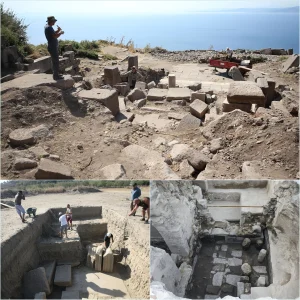
A stone statue, known as a Balbal, measuring up to 3 meters in height, was discovered during agricultural work in Ak-Bulun village, located in the Tyup district of Kyrgyzstan’s Issyk-Kul region.
A Balbal is a type of tombstone erected by the ancient Turks to commemorate individuals buried in kurgans. These statues were typically placed around graves to honor the deceased.
On the evening of October 15, Erkin Turbaev, aged 60, stumbled upon the Balbal while preparing his land for potato planting. When his plow hit an unexpected object, Turbaev decided to investigate and unearthed a stone statue more than two meters long.
Turbaev, who manages 80 acres of land between Ak-Bulak and Belovodskoye, remarked, “This is a significant historical discovery for our village. It will bring good fortune.”
While many Balbals have been found in Kyrgyzstan, including notable sites like Çolpan Ata and Karakol along the shores of Issyk-Kul Lake, this find adds to the rich tapestry of the region’s history. These statues, estimated to date back to the 6th century, were erected by nomadic Turkish tribes. They typically feature figures carved from stone, representing warriors and their symbolic conquests, and were placed around graves as part of the shamanic traditions of the time. Most Balbals in Kyrgyzstan are concentrated in the Chuy Valley.







